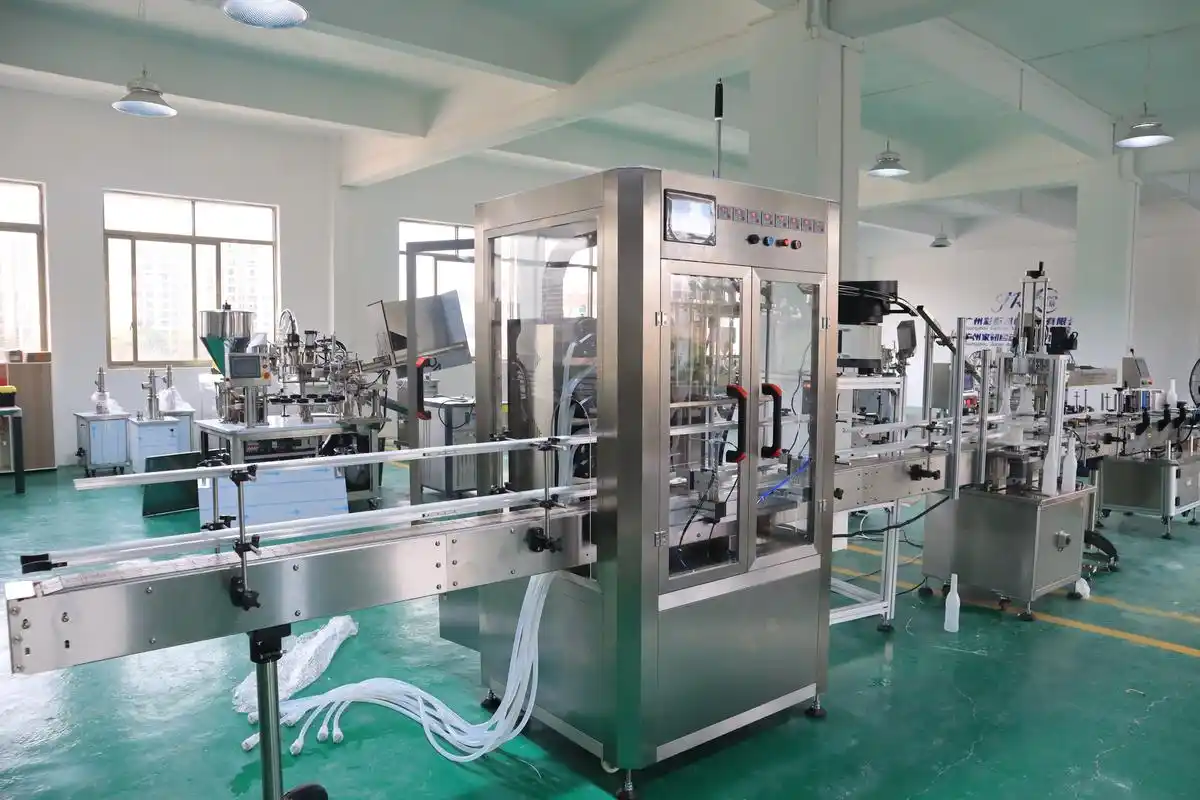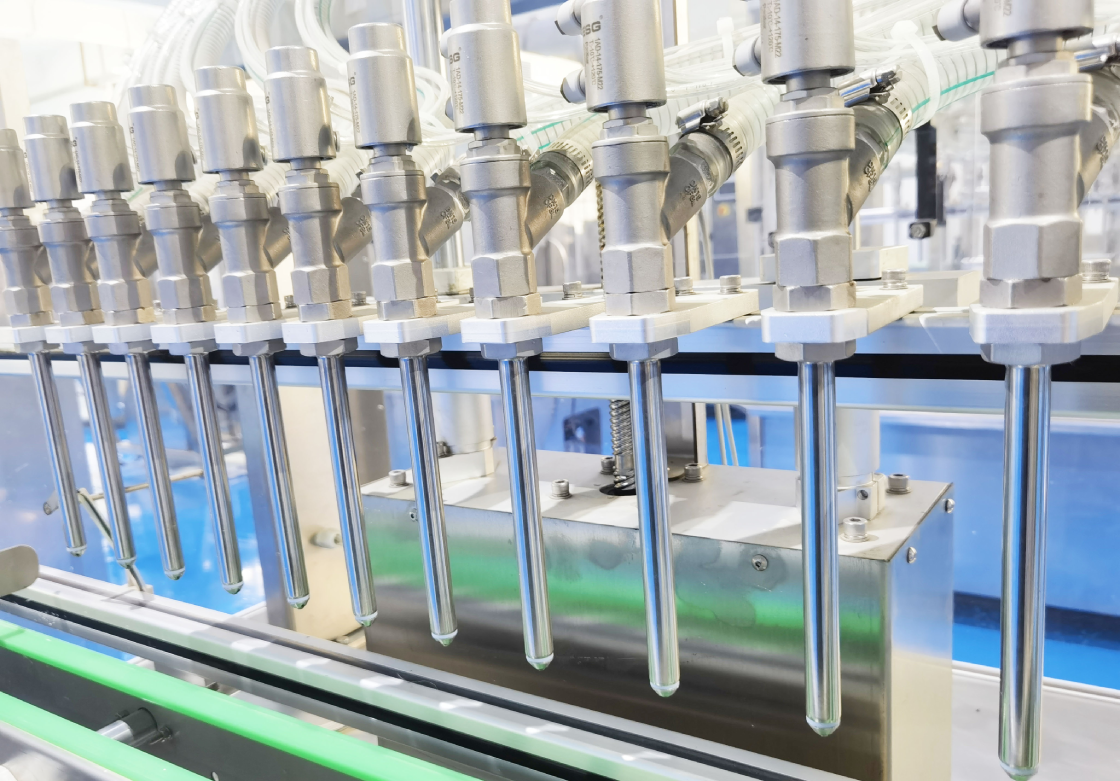English 

T: +86-189-2891-8174
E: wechupack@yeah.net
E: wechupack@yeah.net
104 The Second Building, No.43 Haichong Road, Shiqi Town,Panyu District, Guangzhou City, China




Views: 0 Author: Site Editor Publish Time: 2025-03-14 Origin: Site








In the fast-paced world of production and manufacturing, the demand for greater accuracy and efficiency is continuously rising. One of the most significant advancements in modern production lines is the development and implementation of liquid filling machines. These machines have revolutionized the way industries, especially those in the beverage, pharmaceuticals, and chemical sectors, handle the filling of liquid products. By improving both accuracy and operational efficiency, liquid filling machines are playing a pivotal role in driving cost reduction, optimizing workflow, and enhancing product quality.

Liquid filling machines are automated systems designed to fill containers with precise amounts of liquid. These systems are commonly used in various industries, including food and beverage, pharmaceuticals, chemicals, and cosmetics. The machines are capable of filling a wide variety of containers, such as bottles, pouches, vials, and cans, depending on the product and packaging requirements.
The adoption of liquid filling machines offers several crucial benefits to manufacturers. These machines significantly reduce human error, enhance product consistency, and streamline production processes. The result is an overall increase in productivity, reduced labor costs, and improved quality control.
Accuracy is critical when it comes to liquid filling. Overfilling or underfilling can lead to product wastage, customer dissatisfaction, and regulatory issues. Liquid filling machines ensure that every container is filled with the exact amount of liquid, minimizing product loss and ensuring consistency.
Most advanced liquid filling machines are equipped with cutting-edge technology such as flow meters, weight sensors, and level sensors that continuously monitor and regulate the filling process. This guarantees that the correct volume of liquid is dispensed into each container, reducing the chances of human error or discrepancies in fill levels.
In large-scale production environments, consistency is key. Liquid filling machines allow manufacturers to achieve consistent results across multiple production batches. Whether filling thousands of bottles of juice, pharmaceutical syrups, or cleaning liquids, these machines provide uniformity in both fill volume and quality, helping businesses maintain the trust of their customers.
By maintaining accurate fill levels for each product container, businesses avoid regulatory penalties and ensure that every batch meets the required specifications. This consistency also improves customer experience, as they can rely on getting the same quantity and quality of products each time.
One of the most important advantages of liquid filling machines is the significant boost they provide to production speed. Manual filling processes are not only slow but can also be inconsistent, resulting in lower productivity. Automatic liquid filling machines can fill hundreds or even thousands of containers per hour, greatly improving overall production efficiency.
The high-speed performance of liquid filling machines is especially important in industries like beverages, where products need to be filled and sealed quickly to meet demand. With faster production times, manufacturers can process larger orders, improve inventory turnover, and ensure that products are available for customers at all times.
Another way liquid filling machines enhance efficiency is by reducing the need for manual labor. Once installed and calibrated, these machines can run for extended periods without constant supervision. This not only reduces the need for human intervention but also minimizes downtime due to operator fatigue or human error.
Additionally, liquid filling machines require less workforce involvement, which reduces labor costs. With fewer personnel needed to oversee the filling process, businesses can allocate resources more effectively and invest in other areas of production or quality control.
There are several types of liquid filling machines, each designed to meet specific filling requirements. Understanding these different machines and their applications can help businesses choose the right solution for their production line.
Volumetric liquid filling machines are commonly used in industries that require precise volume control. These machines measure the exact amount of liquid to be dispensed into each container by controlling the volume per cycle. This type of machine is ideal for filling liquids like water, beverages, and low-viscosity products.
Piston liquid filling machines are best suited for high-viscosity liquids such as sauces, creams, and gels. The piston mechanism allows the machine to accurately dispense thicker liquids, ensuring proper control over the amount of product dispensed. These machines are often used in the food and pharmaceutical industries, where the consistency and quality of the product are paramount.

Pump liquid filling machines use a pump to transfer liquid into the container. These machines are versatile and can be used to fill both low and high-viscosity liquids. They are commonly used in industries like cosmetics and pharmaceuticals, where the liquid's flow must be carefully regulated.
Overflow liquid filling machines are ideal for filling containers with precise fill levels. They work by filling each container until the liquid overflows, ensuring that all containers are filled to the same level. This type of machine is often used for beverages and cosmetic products where uniform fill levels are essential.
To ensure that liquid filling machines continue to perform at optimal levels, regular maintenance is essential. Preventive maintenance helps identify potential issues before they affect production, minimizing downtime and costly repairs.
Routine tasks include checking and cleaning nozzles, ensuring that flow meters and sensors are functioning correctly, and replacing worn-out components like gaskets and seals. Proper maintenance ensures that the machines provide long-lasting performance, maximizing return on investment (ROI) for manufacturers.
When maintained correctly, liquid filling machines are built to last for years. The durability of these machines makes them a sound investment for businesses looking to scale their operations. High-quality filling machines are designed to handle the rigorous demands of continuous production, and their longevity helps businesses avoid the high costs of frequent equipment replacement.
Advancements in automation technology have significantly enhanced the capabilities of liquid filling machines. Modern systems can be integrated with conveyor belts, capping machines, and labeling equipment, creating a fully automated production line that requires minimal human intervention. This level of integration improves efficiency and reduces the risk of errors, ensuring that the entire filling process is seamless.
The latest liquid filling machines incorporate artificial intelligence (AI) and data analytics to optimize filling processes. These systems can collect real-time data from sensors and other devices to monitor performance, detect inefficiencies, and predict maintenance needs. By leveraging AI, manufacturers can optimize production schedules, reduce waste, and improve overall system performance.
In today's competitive manufacturing landscape, the role of liquid filling machines in enhancing both accuracy and efficiency cannot be overstated. These machines help manufacturers meet high production demands while maintaining strict quality control standards. The increased speed, reduced labor costs, and minimized waste offered by liquid filling machines contribute to more streamlined operations and improved bottom lines.
As industries continue to evolve and customer expectations rise, investing in state-of-the-art liquid filling machines will be a key factor in maintaining a competitive edge. The continual advancements in filling technologies, including automation, AI integration, and smart systems, will only further enhance the accuracy, efficiency, and profitability of production lines across multiple sectors.